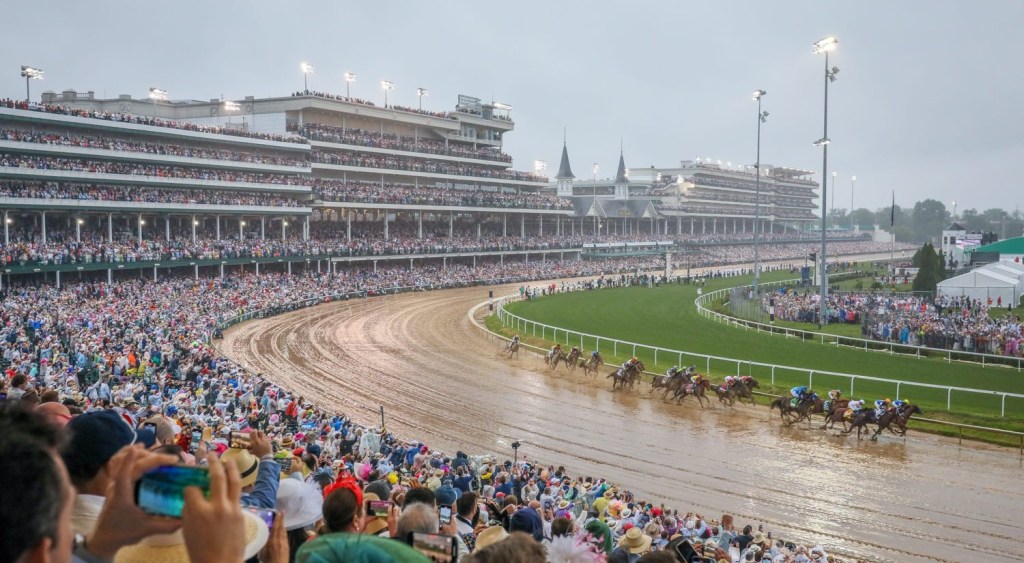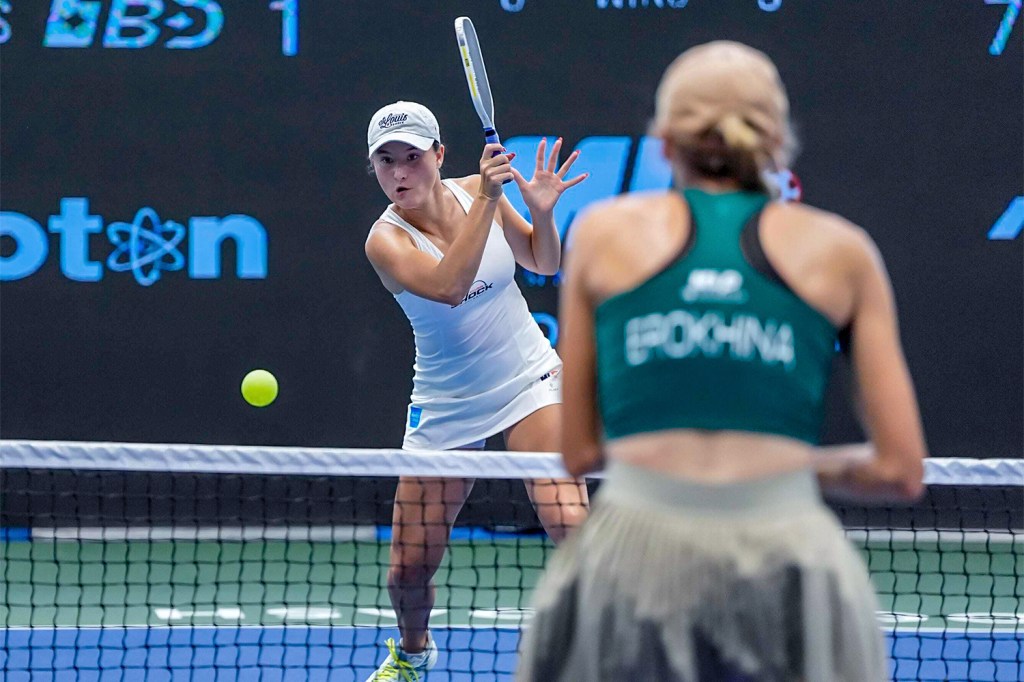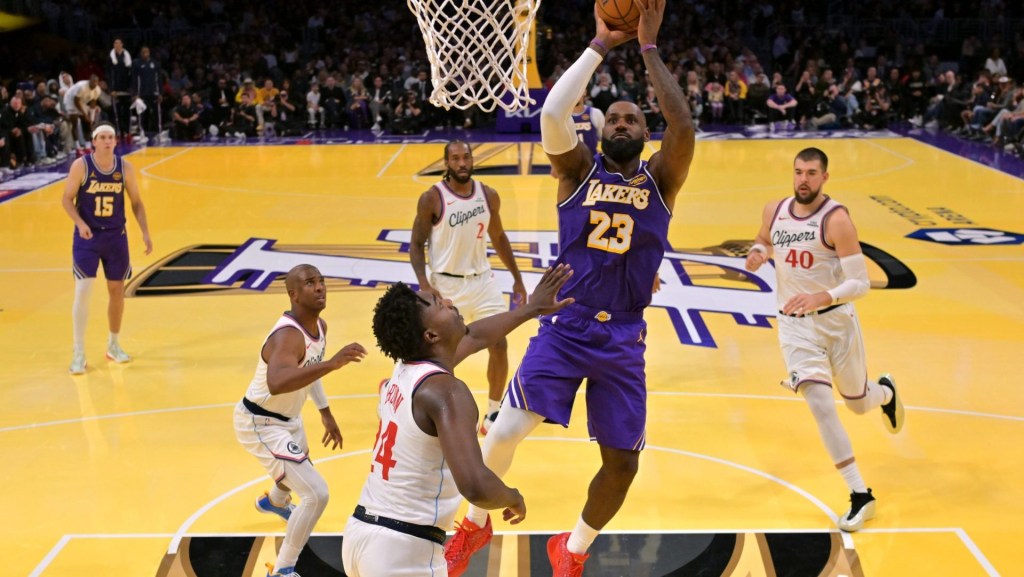Former NBA star Baron Davis and New York Giants defensive end Kayvon Thibodeaux are among several high-profile team owners in the National Thoroughbred League, a new horse racing league set to debut September 2-3 during Labor Day Weekend in Nashville.
Other team owners in the NTL include music stars Nelly and Rick Ross, NBA veteran Danny Green, Hall of Fame horse trainer Steve Asmussen, and Moira Forbes of the Forbes publishing family. The league will own all of the horses, allowing for a “centralized” structure for overseeing horse safety as opposed to America’s existing horse racing industry that typically adheres to varying regulatory bodies across the 50 states.
This month’s Kentucky Derby was marred by the deaths of eight horses over three weeks at Churchill Downs. In last week’s Preakness Stakes, a three-year-old horse trained by Bob Baffert was euthanized on the track after an injury during the undercard in Baltimore.
“Every track has its own rules, and then you have 50 state rules,” NTL co-founder Randall Lane says of horse safety regulations. “Of course, we’re gonna adhere strictly to the rules of each track wherever we are, but because we’re a league, we can impose our own wall that’s separate from that and creates a centralized body.”
On Monday, the Horseracing Integrity and Safety Authority relaunched its nationwide anti-doping program to oversee horse medication distribution and other safety conditions.
Lane, the chief content officer at Forbes, co-founded the National Thoroughbred League alongside prominent investor Robert Daugherty. Tom Ludt, former chairman of the Breeders Cup, is the NTL’s president of horse operations, and former NWSL commissioner Lisa Baird chairs its advisory board.
“All of horse racing currently, there’s such strong economic incentives to thrust the edge of what’s right or what’s wrong frankly for the horse’s health,” Daughtery said. “The idea that all of us collectively own these horses, we have a collective interest in making sure they are adhering to the highest standards of health and safety,” he adds. “The fact that HISA, which is controversial within the industry, is launching now—that actually gives me a lot of comfort. It makes the investment a lot safer. I think this is probably the opportune time to be launching exactly what we’re doing because I think we’ll drive a lot of discipline into the sport.”
Animal Wellness Action, a Washington DC-based animal rights group, said Baffert should not have been allowed to race in last week’s Preakness Stakes after his three-year-old colt Havnameltdown died leading up to the race. Baffert, the famed trainer who has been suspended from Churchill Downs since a failed drug test of his 2021 Kentucky Derby winner Medina Spirit, ended up winning the Preakness with his colt National Treasure.
“Bob Baffert being allowed to run at Pimlico this year reminds us again of how the long-standing system of promoting track safety for Thoroughbreds and jockeys is broken,” Animal Wellness Action president Wayne Pacelle said in a statement. “If Baffert was rightly excluded from a Triple Crown venue in 2022 and 2023, then that prohibition should have applied to other race venues during that same time period and especially the Triple Crown tracks. This is precisely why there must be a national authority to set rules to keep horses safe.”
Medina Spirit collapsed and died in December 2021 following a workout at Santa Anita Park. He was three years old, and the preliminary cause of death was ruled as a heart attack.
Among the questionable standards facing the current $400 billion thoroughbred racing industry is that most horses in high-profile races are typically between two to four years old, competing before their bodies fully mature. Top-performing horses often retire young to breed, as their offspring generate lucrative stud fees for owners.
“An average horse lives to be 30 years old and reaches skeletal maturity at age six,” Daughtery said. “If you look at polo ponies, you’ll see they actually reach top speeds between the ages of eight and 12.”
Teams in the National Thoroughbred League will race older horses and not retire them young to breed, hoping to foster longer-term horse notoriety with fans.
“We wanna create stars,” Lane says. “Horse racing is basically the only sport in the world that retires its stars as soon as they become famous. So we’ve fixed that.”
“In terms of horse safety, a horse that’s skeletally mature at seven or eight that has been taken care by a league likely has a stronger chance of success in the long run from a health standpoint,” Daughtery says.
Daughtery, who has an economics degree from Harvard University and serves as dean of Forbes School of Business & Technology at the University of Arizona, envisions horses in the National Thoroughbred League breaking on-track records that Big Red set in the early 1970s.
“Having run a lot of financial models against this and just looking at all of the speed records of all these different tracks, I’ll bet you in nickel we’ll start to see horses that are 7, 8, 9 years old within the National Thoroughbred League that will start to break records of Secretariat,” Daughtery proclaimed. “A 9-year-old horse is like LeBron James at 28 versus LeBron James at 18.”
The NTL’s inaugural six-race schedule begins September 2 in Nashville and continues through December with events in Seattle, New Jersey, Los Angeles, and Tampa. Names, logos, and uniforms for the league’s six teams will be announced next month.
Each NTL race weekend will aim to create a “Formula One”-like festival atmosphere with food, fashion, concerts, and parties. The league’s financial model will be driven by ticket sales and sponsorships, not retiring young horses to become breeders.
“In any other sport, the Kentucky Derby is kinda like the rookie All-Star Game. But because it’s the most famous race and the horses that win it are very valuable for breeding, it’s in the economic interest of the owner to retire the horse rather than race them,” Lane says. “What we’re doing is from day one it makes sense to create stars and build fans, it’s a different model intentionally. We’ve put guardrails up so nobody can go rogue and say I don’t care, I’m retiring LeBron at 18.”

















